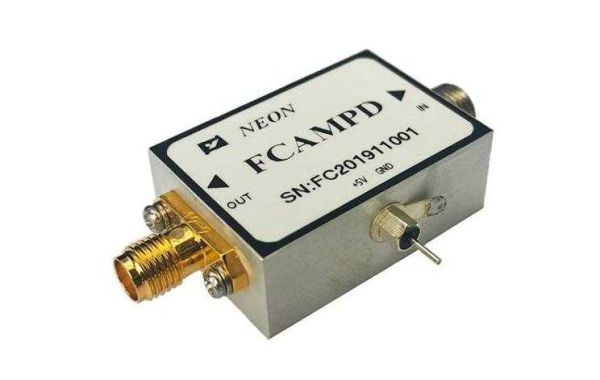Amplified photodetectors play a vital role across various industries, where sensitive light detection is critical. The FCAMPD Amplified RF InGaAs Photodetector is particularly effective in applications that require accurate and rapid detection of weak optical signals, such as optical fiber communications, biomedical imaging, and environmental monitoring. The device’s unique configuration—with an InGaAs photodiode coupled to a low-noise TIA—ensures exceptional signal integrity.
In optical fiber communication, amplified photodetectors are crucial for transforming weak light pulses into strong electrical signals that facilitate long-distance data transmission. Additionally, high-speed versions are pivotal in free-space laser communications, where they decode rapid signal changes at high bandwidths.
In biomedical imaging, amplified photodetectors capture faint light from biological samples, supporting high-resolution imaging techniques like fluorescence microscopy. This enables medical professionals to diagnose diseases and monitor treatment efficacy based on detailed images of tissue and cellular activity.
Environmental monitoring benefits from the ability of amplified photodetectors to identify pollutants through specific wavelengths of light. By measuring light pollution or detecting contaminants in air and water, these photodetectors aid in maintaining environmental standards and advancing research.
With the expansion of astronomical observation, high-speed amplified photodetectors with broad bandwidths have become essential for observing transient celestial events. By amplifying faint light signals from distant stars and pulsars, these devices provide invaluable data for understanding the universe.
In each of these fields, the NEON FCAMPD model showcases the versatility of high-speed, low-noise amplification technology, driving innovations in optoelectronics and enhancing sensitive light detection across industries.








